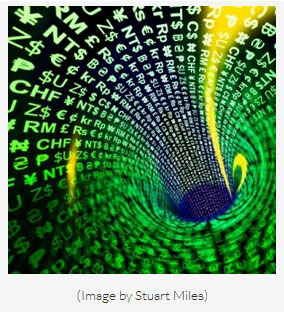The following is a commentary I wrote for The Forum section of London business-paper City A.M. It was published yesterday. The link is here.
 It is now six years since the collapse of Lehman Brothers, and considering that the U.S. economy has officially been in recovery for the past five years, that equity indexes have put in new all-time highs, and that credit markets are once again ebullient to the point of carelessness, it is worth contemplating that monetary policy remains stuck in pedal-to-the-floor stimulus mode. Granted, quantitative easing is (once again) scheduled to end, and the first rates hikes are now expected for next year, but the present policy stance certainly remains highly accommodative. A full ‘exit’ by the Fed is still merely a prospect.
It is now six years since the collapse of Lehman Brothers, and considering that the U.S. economy has officially been in recovery for the past five years, that equity indexes have put in new all-time highs, and that credit markets are once again ebullient to the point of carelessness, it is worth contemplating that monetary policy remains stuck in pedal-to-the-floor stimulus mode. Granted, quantitative easing is (once again) scheduled to end, and the first rates hikes are now expected for next year, but the present policy stance certainly remains highly accommodative. A full ‘exit’ by the Fed is still merely a prospect.
Expectations appear to be for the U.S. economy to finally emerge from its long stay in monetary intensive care healthier and fit for self-sustained, if modest, growth. I think this is unlikely. The lengthy period of monetary stimulus will have saddled the economy with new dislocations. And if central bank intervention did indeed manage to arrest the forces of liquidation that the crisis had unleashed, then some old imbalances will also still hang around.
“Easy money” is — contrary to how it is frequently portrayed — not some tonic that simply lifts the general mood and boosts all economic activity proportionally. Monetary stimulus is always a form of market intervention. It changes relative prices (as distinguished from the ‘price level’ that most economists obsess about); it alters the allocation of scarce resources and the direction of economic activity. Monetary policy always affects the structure of the economy — otherwise no impact on real activity could be generated. It is a drug with considerable side effects.
The latest crisis should provide a warning. As David Stockman pointed out, it did not arrive on a meteor from space, but had its origin in distortions in the housing market in the U.S. — and the U.K., Spain and Ireland — and in related credit markets, and therefore ultimately in the “easy money” policies of the early 2000s. Administratively suppressing short rates down to 1 percent for a prolonged period was then the “unconventional” policy du jour, and it was a success of sorts. A credit crunch and deleveraging were indeed avoided, which were then feared as a consequence of WorldCom and Enron defaulting and the dot.com-bubble bursting, but only at the price of blowing an even bigger bubble elsewhere.
[Listen to: Technician Bert Dohmen: Global Central Banks Likely to Counter Any Slowdown With More Stimulus]
This is the problem with our modern fiat money system. With the supply of money no longer constrained by a nature-given, scarce commodity (gold or silver), but now fully elastic, essentially unlimited, and under the control of a lender of last resort central bank, the parameters of risk-taking are forever altered.
Allegedly, we can now stop bank-runs and ignite short-term growth spurts, or keep the overall “price level” advancing on some arbitrarily chosen path of 2 percent. But we can achieve all of this only through monetary manipulations that must create imbalances in the economy. And as the overwhelming temptation is now to use “easy money” to avoid or shorten any period of liquidation, to go for all growth and no correction, distortions will accumulate over time.
As we move from cycle to cycle, the imbalances get bigger, asset valuations become more stretched, the debt load rises, and central banks take policy to new extremes to arrest the market’s growing desire for a much needed cleansing. That policy rates around the world have converged on zero is not a cyclical but a structural phenomenon.
Central bank stimulus is not leading to virtuous circles but to vicious ones. How can we get out? — Only by changing our attitudes to monetary interventions fundamentally. Only if we accept that interest rates are market prices, not policy levers. Only if we accept that the growth we generate through cheap credit and interest-rate suppression is always fleeting, and always comes at the price of new capital misallocations.
The prospect for such a change looks dim at present. Last year’s feverish excitement about Abenomics and this year’s urgent demands for Eurozone QE show that the belief in central bank activism is unbroken, and I remain sceptical as to whether the Fed and the Bank of England can achieve a proper and lasting “exit” from ultra-loose policy in this environment. The near-term outlook is for more heavy-handed interventions everywhere, and the endgame is probably inflation. This will end badly.






